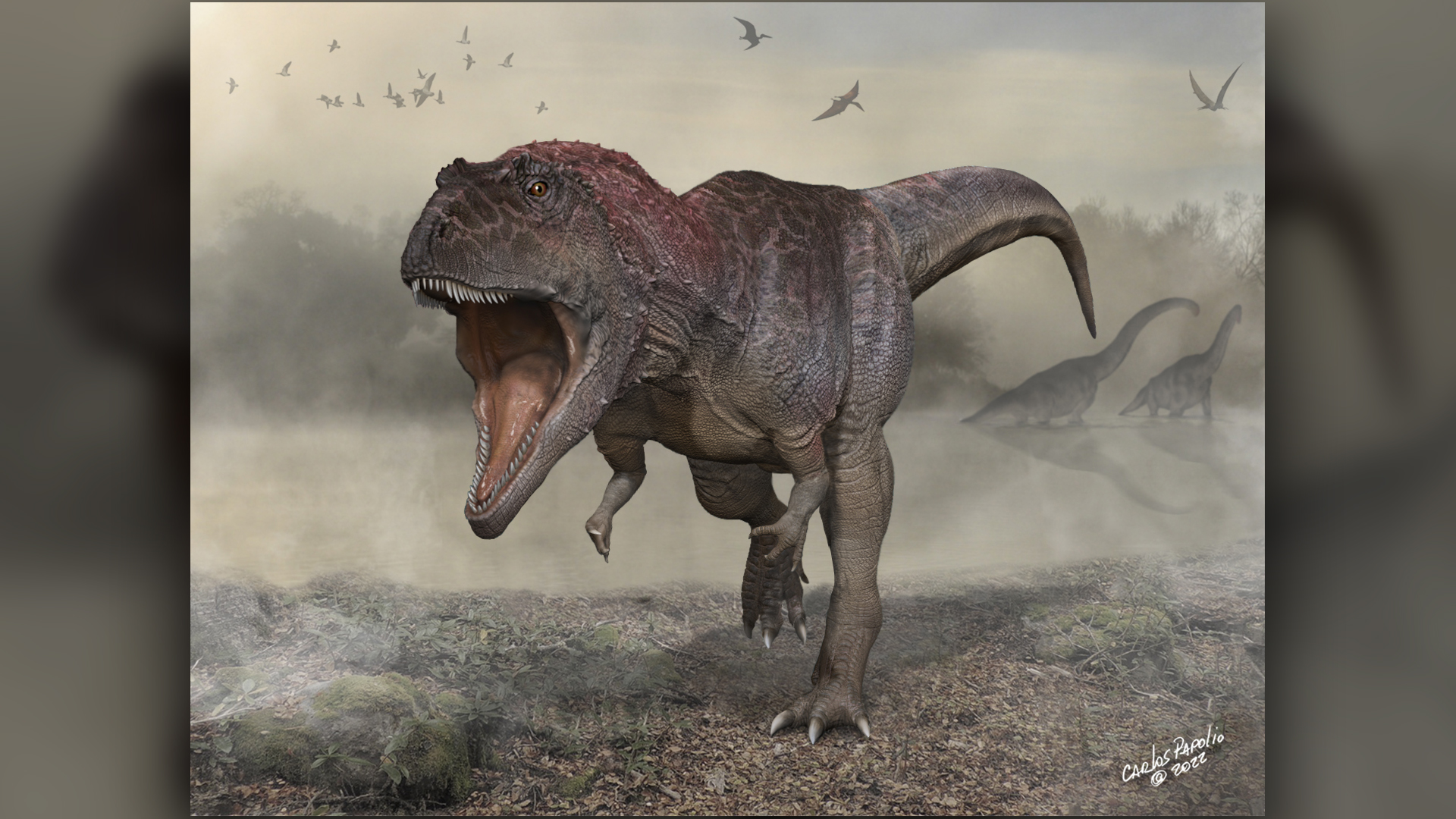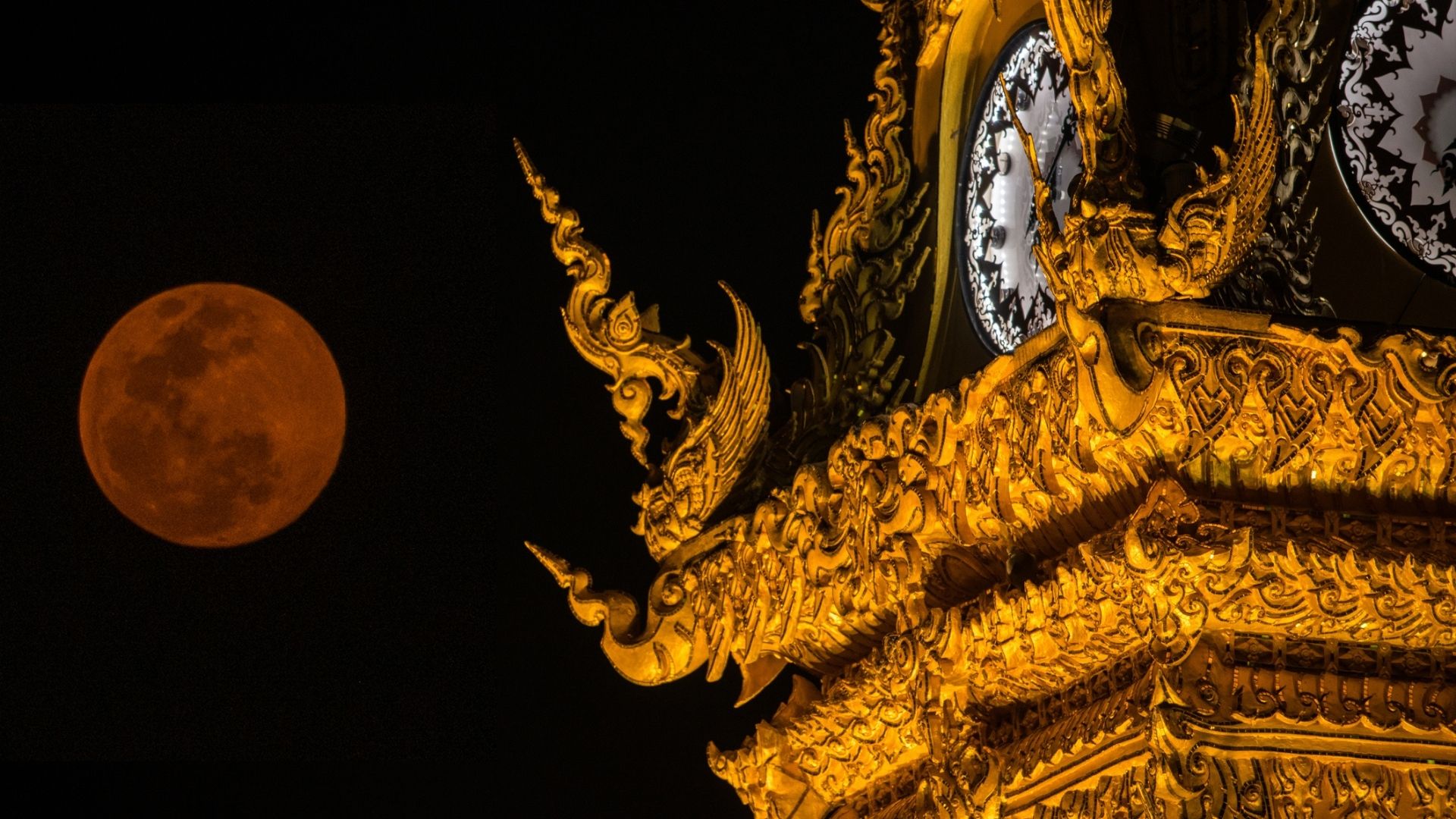Giant meat-eating dinosaur had a fancy skull and wee arms like T. rex
The newly described species and Tyrannosaurus were not closely related.

A newfound species of carnivorous dinosaur had disproportionately small arms, suggesting that this particular anatomical quirk — shared by the mighty but flimsy-armed Tyrannosaurus rex — may have been more common among large predatory dinosaurs than previously thought.
The newly described species, Meraxes gigas, is named after the dragon Meraxes in the fantasy fiction series "A Song of Ice and Fire" (the inspiration for HBO's "Game of Thrones") by writer George R.R. Martin. Meraxes belonged to a group of theropods — mostly bipedal meat-eaters — known as Carcharodontosauridae, which includes other dinosaur titans such as Giganotosaurus, Mapusaurus and Carcharodontosaurus. This group lived during the Cretaceous period (about 145 million to 66 million years ago), but died out before the extinction event that killed off all the non-avian dinosaurs and marked the end of the Cretaceous.
Paleontologists excavated the new M. gigas specimen, which was in excellent condition, from the Huincul Formation in northern Patagonia, Argentina. The fossils date to the early part of the Cretaceous, and are thought to be between 90 million and 100 million years old. Scientists found the bones, which included a near-complete forelimb, and parts of the skull, femur and pelvis, in a location that was rich in fossil material; four sauropod dinosaurs were also buried in the same rock layer, said Juan Canale, a researcher at the Ernesto Bachmann Paleontological Museum in Neuquén, Argentina, and lead author of a study about the dragon-named theropod.
Canale and his colleagues dug through several tons of sandstone to reach the fossil, he told Live Science in an email. The study authors suspect that when the dinosaur died, its remains were rapidly covered by sediments carried by flowing water, which protected the body from decay.
In life, the dinosaur would have weighed well over 4.4 tons (4 metric tons), the scientists estimated.
Related: Massive bulldog-faced dinosaur was like a T. rex on steroids
Though Meraxes and T. rex both had wimpy-looking front limbs, they are not close relatives; instead, this trait is an example of convergent evolution — when distantly related species evolve similar features, Canale said.
Get the world’s most fascinating discoveries delivered straight to your inbox.
The evolution of diminutive arms in these carnivorous cousins suggests that multiple lineages of large predatory theropods evolved to have reduced forelimbs to fill a specific ecological niche.
But not all large theropods had tiny arms. Some had long forelimbs, such as the ornithomimosaur Deinocheirus and the bird-like theropod Gigantoraptor. This hints that forelimb reduction was not simply related to body size in theropods. Rather, it tracks to some other trait in large predatory theropod species — likely skull size, the study authors reported.
So, why did some big theropods, like T. rex and Meraxes, have such small arms? One explanation could be that certain predatory functions in earlier species in the Meraxes and T. rex lineages were carried out by the arms — but in species that evolved later in the group's lineage, a large head with powerful jaws became a more effective tool for hunting prey.
Interestingly, preserved structures in Meraxes' arm bones suggest that its small arms had comparatively large muscles. Though proportionally tiny, these limbs may not have been completely useless, Canale said.
"I do not think they were useful in predation, given [that] most of the actions related to this were most likely performed by the head. I’m inclined to think that they were used in other kinds of activities, like holding the female during mating, or helping to raise the body from a prone position," Canale told Live Science.
And Meraxes' puny arms weren’t the only feature that caught the paleontologists' attention. The big dinosaur's skull was surprisingly ornate, decorated with crests, furrows, bumps and miniature horns. This type of ornamentation typically appears late in development, when animals become sexually mature, which hints that the elaborate ornamentation played a role in helping Meraxes find a mate.
"Given that sexual selection is a powerful evolutionary pressure, I think the cranial ornamentations are related to some kind of display traits," Canale said. "But given that we cannot directly observe their behavior, it is impossible to be certain about this."
The findings were published July 7 in the journal Current Biology.
Originally published on Live Science.
Conor Feehly is a New Zealand-based science writer. He has earned a master's in science communication from the University of Otago, Dunedin. His writing has appeared in Cosmos Magazine, Discover Magazine and ScienceAlert. His writing largely covers topics relating to neuroscience and psychology, although he also enjoys writing about a number of scientific subjects ranging from astrophysics to archaeology.
 Live Science Plus
Live Science Plus







